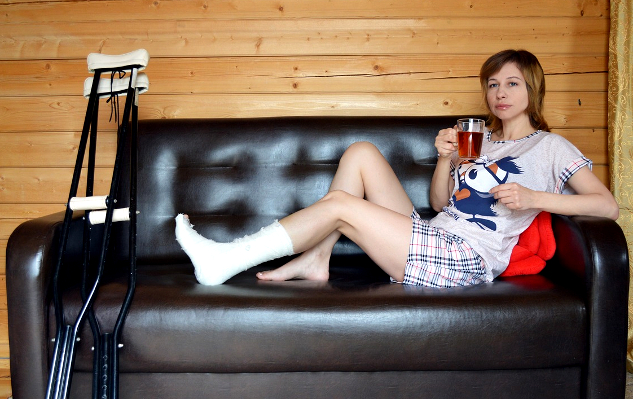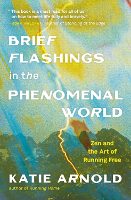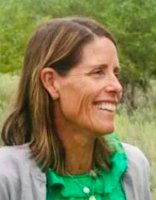
Image by Victoria from Pixabay
In 2016, I fell out of a raft and badly injured my leg. It was our first day of a six-day wilderness trip down Idaho’s remote Middle Fork of the Salmon River. For the next five days, my husband and I navigated 100 major rapids in 100 miles with a leg that couldn’t bear weight. When at last we got out safely, I learned that my leg was broken and that I’d have to have surgery. My surgeon said I would be on crutches for 14 weeks and told me I should never run again.
This is news no one wants to hear. As a competitive runner, outdoor athlete, and writer, my body isn’t just my vehicle for running; it’s also how I write. I was determined to prove my surgeon wrong. I couldn’t just turn my recovery over to my surgeon and physical therapist. I had to train my mind in order to heal my body.
For weeks I went to rehab, did strength work, and diligently followed my surgeon’s orders. At home I focused on inner exercises of healing — what I’ve come to call mental PT. These were easy to practice, required no equipment, cost nothing, shifted my outlook to positivity, and primed my body for full and lasting recovery.
These are the mental habits developed that you can use, too, on your road to recovering from injury:
1. Change the story
Because of the dramatic nature of my injury, everyone wanted to talk about the accident: How did we flip the raft? How did I stay on the river with a broken leg? But talking about how I got hurt gave too much energy to the accident.
Instead, when someone asked, I told them how I was healing: by eating more protein and basking in the love of my friends who came bearing good cheer, chocolate bars, Buddhist books, and a bicycle trainer. Every time I steered the story toward active recovery rather than the injury itself, I signaled to my body to do the same.
2. Name it
While I didn’t want to dwell on the trauma of my injury, identifying my emotions helped diffuse them. Some days I’d see people running and feel such enormous envy and grief I thought it might swallow me. When I could name the emotions outright and own them out loud — anger, sadness, jealousy — I could offer myself the compassion I needed to heal. I saw that my emotions were a natural part of injury, not something to be denied but part of the process of healing.
3. Take a social media break
Watching other people you know or admire pursuing goals and pushing their limits when you’re no longer able to could be deeply demoralizing. Culling my social media feeds of posts I thought might trigger FOMO, comparisons, or self-doubt helped keep these reactions in check. Healing requires focus and tremendous energy. Conserve yours by getting lots of sleep, eating well, and celebrating small daily wins.
4. Visualize
When I couldn’t run a Grand Canyon event as I’d planned, my therapist suggested I run it anyway — in my mind. I’d completed Rim to Rim to Rim, as it’s called, in record time once before, so I knew what to picture. Closing my eyes, I saw myself on the South Rim, jogging down the South Kaibab trail in the darkness before dawn. I pictured the rising sun, casting North Rim in hues of peach and tangerine. I heard the soft slap of my sneakers as they struck the dusty trail. I smelled the Colorado River, swift and clear and cold as I ran over the Iron Bridge. By the time I finished retracing the whole route in my mind, I felt enlivened and hopeful, and I truly believed I’d run it again.
5. Write
I’m a writer by profession and passion, so I’m biased toward this method. But even for non-writers, it works. Grab a pen and notebook and set your cell phone timer for 10 minutes. Then, go. Write everything you’ll do when you’re fully healed. The secret is to use present tense, not future, and active verbs: Not my body will heal, but I am healing my body. Language matters, as does gratitude. Thank you for my healing. Do this short practice every day for a week and see how your mind begins to shifts towards believing it’s true.
6. Be creative
Be vigilant with your physical therapy and creative in everything else. Do what moves you, literally. Are you able to go on walks in your neighborhood? Do you feel like pedaling your bike one-legged on a trainer? Have you always wanted to take up yoga or tai chi? Follow your instincts and listen to your body and mind. Experimenting with new ways of moving and being will help you develop new habits that will stick long after you’re healed.
7. Sit still
Even if you feel like all you do is sit, a short, daily meditation practice can help ease the stress of injury and prime your mind for healing. Find a comfortable spot and position and practice counting your breaths for 5 or 10 minutes. Inhale one, exhale one. Inhale two, exhale two, and so on. When you get to 10, start over. Don’t worry about your thoughts: meditation is not about having no thoughts. It’s simply about not following them down the rabbit hole of your mind. Remember, there’s no wrong way to meditate. It means simply studying your mind and meeting each moment as it is rather than how you want it to be. Just like healing.
8. Cultivate beginner’s mind
This phrase, popularized by Zen Buddhism, means stripping yourself of expectation and expertise and finding the joy in starting over. When we approach life from a position of open-minded curiosity, we free ourselves of our impossibly high standards and give ourselves room to try and fail, taking pride in and learning from both success and failure. As Shunryu Suzuki writes in his classic guide, Zen Mind, Beginner’s Mind: “In the beginner’s mind there are many possibilities; in the expert’s mind there are few.” See injury as a new beginning, a fresh start, and you’ll discover you’re capable of far more than you could imagine.
9. Go outside everyday
Even if it’s just to sit on your steps in the sun, spend time outdoors. Vitamin D is essential for our minds, mood, and bones. Bring your notebook out to write, or simply find a comfortable spot sit quietly. If it’s winter, bundle up and turn your face to the sun.
10. Make lemonade
Adversity is opportunity in disguise. I can look back and see what I gained after my injury — a commitment to strength training, a tai chi practice, meditation, and the wisdom to know that true healing is an inside job.
If you’re patient and committed to physical and mental PT, all it takes to regain strength is time. One day you’ll realize you’ve forgotten which leg you broke, which rotator cuff was repaired. That’s when you know you’re through it. Until then, and after, stay grateful and keep believing. Trust me, better days are ahead.
Copyright 2024. All Rights Reserved.
Book by this Author:
BOOK: Brief Flashings in the Phenomenal World
Brief Flashings in the Phenomenal World: Zen and the Art of Running Free
by Katie Arnold.
 In the midst of hardship, Katie Arnold turns for support to the Zen practice she had long dabbled in. Brief Flashings in the Phenomenal World is a Zen study wrapped in a memoir that tells the story of a search for stillness by a woman born for wildness.
In the midst of hardship, Katie Arnold turns for support to the Zen practice she had long dabbled in. Brief Flashings in the Phenomenal World is a Zen study wrapped in a memoir that tells the story of a search for stillness by a woman born for wildness.
Spanning roughly two years, from shortly before the accident that shattered her leg and her life, through the long, uncertain healing of both leg and marriage, it is a personal narrative of that tumultuous time nested inside meditations on Zen.
For more info and/or to order this book, click here. Also available as a Kindle edition.
About the Author
 Katie Arnold is an award-winning journalist, longtime contributor to Outside Magazine, and author of the acclaimed 2019 memoir Running Home. A Zen practitioner and champion ultrarunner, Katie teaches writing and running retreats that explore the link between movement and creativity, wilderness and stillness. Her writing has been featured in The New York Times, The Wall Street Journal, ESPN The Magazine, Runner’s World, and Elle, among others. Her new book, Brief Flashings in the Phenomenal World: Zen and the Art of Running Free (Parallax Press, April 16, 2024), is a spiritual guide, a classic adventure tale, and a philosophical quest into the ultramarathon of life. Learn more at KatieArnold.net.
Katie Arnold is an award-winning journalist, longtime contributor to Outside Magazine, and author of the acclaimed 2019 memoir Running Home. A Zen practitioner and champion ultrarunner, Katie teaches writing and running retreats that explore the link between movement and creativity, wilderness and stillness. Her writing has been featured in The New York Times, The Wall Street Journal, ESPN The Magazine, Runner’s World, and Elle, among others. Her new book, Brief Flashings in the Phenomenal World: Zen and the Art of Running Free (Parallax Press, April 16, 2024), is a spiritual guide, a classic adventure tale, and a philosophical quest into the ultramarathon of life. Learn more at KatieArnold.net.





















